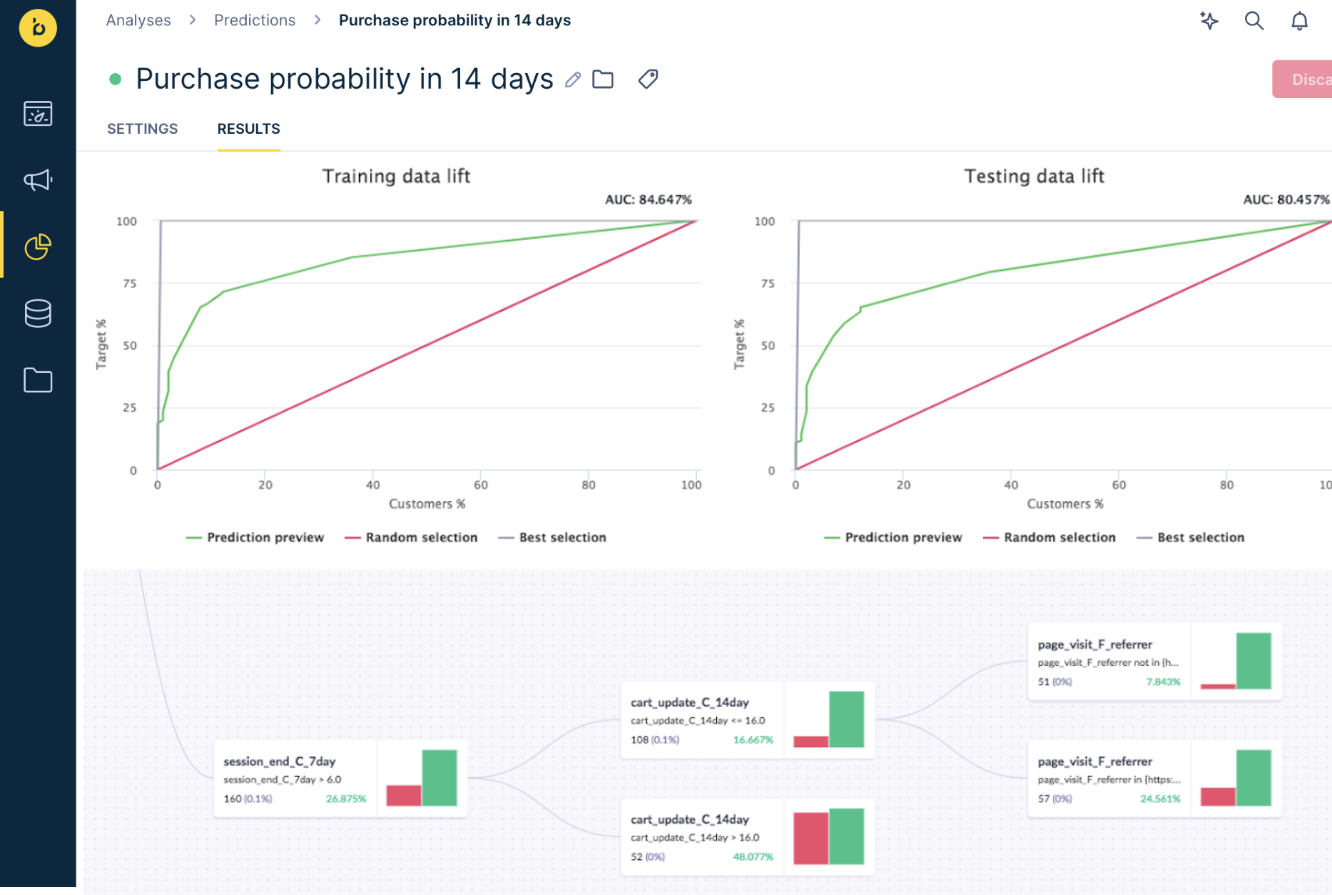Predictions
Bloomreach Engagement Predictions are an advanced feature powered by our own AI, Loomi AI, which uses machine learning models to predict customer behavior. The predictive analytics combines insights derived from historical and real-time data of your customers and evaluates their propensity to take certain actions. Based on the evaluation, you will be much better equipped to differentiate between your customers and to choose the right campaign for a particular part of your audience to maximize your conversion rates.

Watch this short introductory video about this feature:
Overview
The Predictions Manual is made up of the following articles:
Glossary
- Customer - a customer profile in Bloomreach Engagement.
- Eligibilite customer - customers in Bloomreach Engagement who satisfy conditions to be included in the model calculation.
- Feature - input variable used by the prediction model to make a prediction. An example of the feature is a country of a customer or the number of purchases in the last year of a customer.
- Feature window - time period, from which events are being used to compute features. Expanding this window increases information considered by the prediction model.
- Target - the variable which the prediction model is trying to predict (for example, purchase).
- Target window - time period, for which we are trying to predict the target (for example, next 30 days).
- Data set - a collection of data points, also called samples.
- Training data set - data set used for training of the model.
- Test data set - data set used for evaluation of prediction performance.
- Prediction model/decision tree - a model that uses statistics to predict outcomes
- Model quality - is a set of metrics estimating how accurate a prediction model is on new samples (dataset that was not available while training the model). Commonly used metrics are quantitative evaluation metrics on the testing dataset (such as precision or recall) or qualitative metrics using human annotators (such as usability testing studies).
- Result/probability - value that is returned by the model/decision tree representing the predicted attribute
Prerequisites
For the prediction to be accurate, it is necessary that you have gathered enough historical customer data relevant to the chosen target.
Updated about 1 year ago
